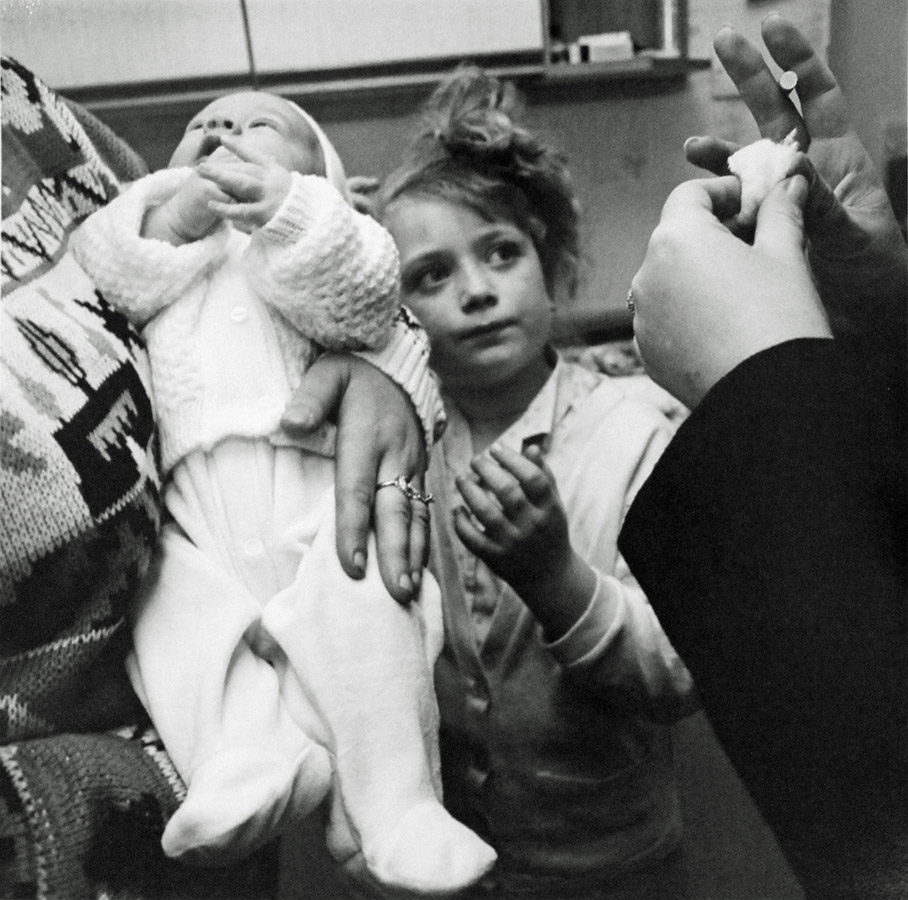A new home for British photography opened to the public in London today and promises to be a hub for connecting photography and photographers across the nation. Peter Dench finds out more about Centre for British Photography…
A short walk from Buckingham Palace, near the Ritz Carlton Hotel and running parallel to the border of Mayfair and St James’s is Jermyn Street, created around 1664 by and named after Henry Jermyn, 1st Earl of St Albans. It has developed to become known primarily as a street for gentlemen’s clothing retailers.
Today you could drift into number 55, Davidoff of London, and pick up a box of rare and vintage cigars or pop into number 71-72 for a shirt from royal makers, Turnbull & Asser. At number 74 you can get a haircut among luxury grooming products at Taylor of Old Bond Street. At number 45, the Fortnum & Mason restaurant, you could lunch on a £62.50 plate of Dover Sole a la Meunière. Or you could check-in at The Cavendish Hotel at number 81 for afternoon tea.
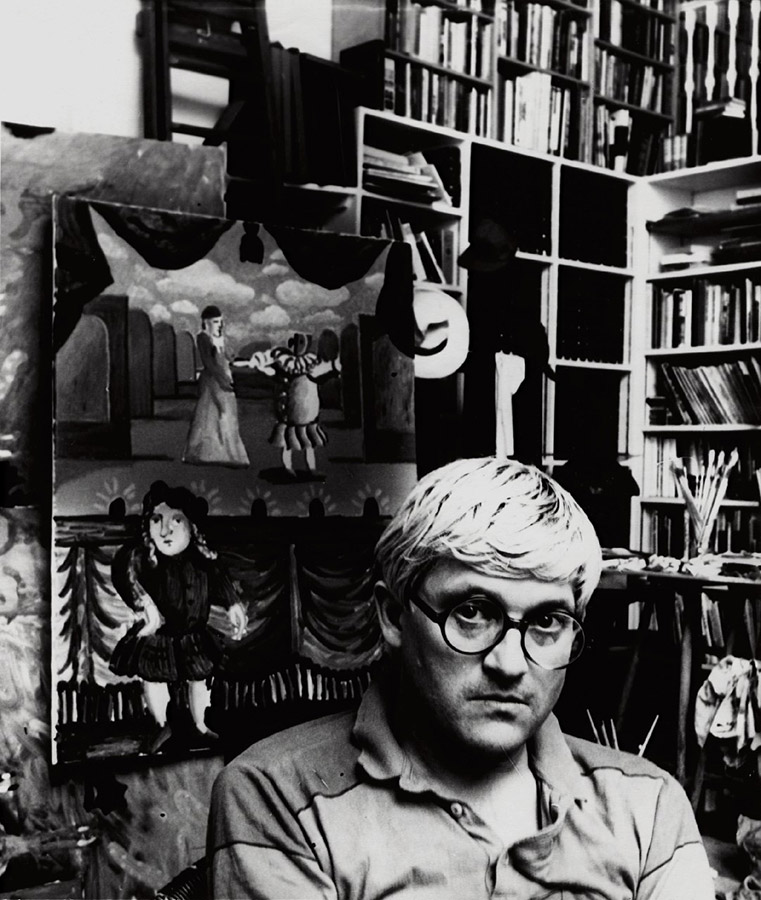
Bill Brandt ‘David Hockney’, 1980. © Bill Brandt Estate, Courtesy Centre for British Photography, London
There is no pub on Jermyn Street but plenty of shoe makers, including Tricker’s and two Crockett and Jones. The most renowned is arguably John Lobb at number 88 who began making bespoke footwear over 150 years ago. For the bespoke service, at the first of several appointments, the Master Last Maker takes detailed measurements from the client’s foot. Using these precise measurements, the contour of the foot is sculpted by hand in hornbeam wood, upon which the leather upper of the client’s bespoke pair of boots or shoes will take shape. The finished crafted wooden foot remains with Lobb so the client can dial in an order for a new pair.
Behind the modernist facade at number 49, formerly home to an Italian style menswear shop, is the Centre for British Photography. This isn’t a story about affluence and wealth; quite the reverse. It’s an age-old story about a new kid on the block striving to compete and succeed in business and in a city where generations have tried. The location is convenient and potential audience reach is huge. It’s not far from major railway stations, equidistant from two major tube stations, on primary bus routes, 30 seconds’ walk from the Royal Academy and just over 10 minutes from The Photographers’ Gallery.
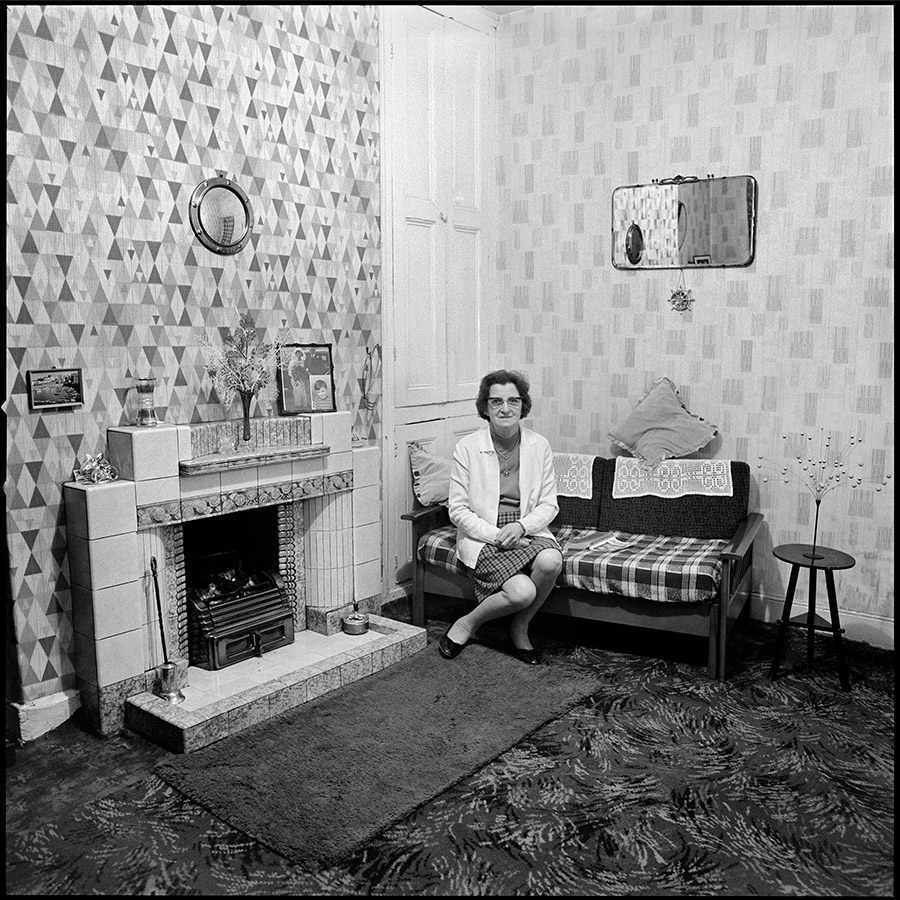
Daniel Meadows And Martin Parr ‘June Street, Salford’, 1973. © Daniel Meadows And Martin Parr, Courtesy Centre for British Photography, London
Community is key
In 1996 James Hyman and his wife Claire, a doctor, began the Hyman Collection – over 3,000 works from over 100 artists including the dearly departed: Bill Brandt, Bert Hardy, Kurt Hutton, Thurston Hopkins, John Chillingworth and the gloriously living: Dafydd Jones, Jim Mortram, Jon Tonks, Juno Calypso. The 8,000sq ft Centre for British Photography (CfBP) will have three floors of exhibitions.
The lower floor will accommodate the collection and provide an educational resource learning centre around archives and collecting British photography. The remaining floors will showcase solo and group shows with an annual programme working in collaboration with other photography partners, collectives, curators and artists. There will be a shop, library, and in a statement of intent, general entry to the CfBP will be free year-round.
The Centre for British Photography is a charitable undertaking supported by The Hyman Foundation, a registered charity established in 2020 to promote and support photography in Britain in all its diversity. It aims to facilitate the work of contemporary artists, fund research and scholarship, and address issues of legacy and the preservation of archives. Founding director of the CfBP, James Hyman, is one of four trustees aided by a dozen advisors.
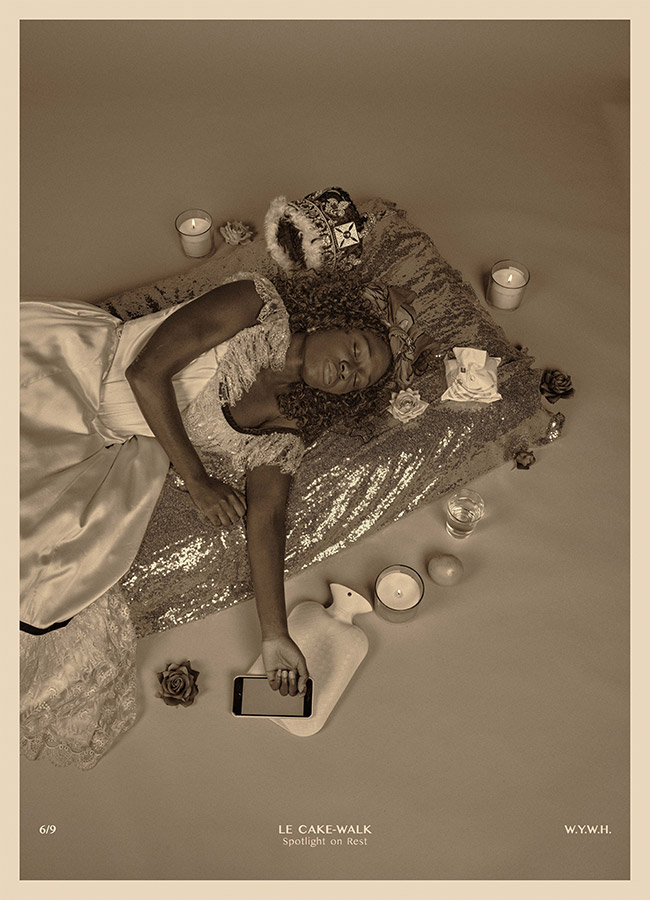
Heather Agyepong ‘Wish You Were Here (6. Le Cake-Walk: Spotlight on Rest)’, 2020. © Heather Agyepong. (Commissioned by The Hyman Collection), Courtesy Centre for British Photography, London
The charitable status helped James negotiate a decent deal on the lease. For the CfBP to work, the photo community needs to work together. The clock is ticking. ‘The only way this is going to succeed is if other people get on board. I’ve put the money up and we have a two-year lease to demonstrate that this is what the community wants. That people will support us and that people will collaborate with us on our programme. We’ll host events that other people are going to organise, we’re getting outside curators to work on shows. Unless at the end of the day we are funding it alongside others, this thing closes down,’ says James matter-of-factly.
Collaboration
It’s wrong to assume James can just cut a cheque to indefinitely support the CfBP. He’s not a Charles Saatchi figure. It’s not about creating a private foundation in his honour or a building as a monument. It’s the CfBP not the Hyman CfBP. At its heart is making British photography accessible and providing a hub for its enrichment.
‘The centre is a new space doing more work for photography and providing more access and opportunities to experience photography. The core thing is it’s not in competition with people, it’s to complement what there is. With this new home, regional museums, galleries and photography collectives will also be invited to use the central London space to present exhibitions and collaborate on talks and events.
The positives of that are, when we do work with artists who maybe would only show in northern galleries or maybe not even show in galleries and we work with them and bring them into a space like the CfBP, that kudos of being in a Mayfair gallery isn’t going to happen to them probably without some costs at some point in the future. We’re also going to have curators who will be able to curate work in a Mayfair-based gallery who might normally not get that opportunity,’ says Tracy Marshall-Grant, the centre’s deputy director.
Tracy has been impressive during her decade in photography. Most recently she was director of development for the Royal Photographic Society (RPS), directed Bristol Photo Festival and LOOK Photo Biennial in Liverpool. She has been director of development at Open Eye Gallery Liverpool and executive director at Belfast Exposed Gallery.
She is also co-founder and director of Northern Narratives, the non-venue-based photography production company specialising in archive exhibitions and long-term archive development projects. Before plunging into photography, she campaigned for homeless and health charities. After deciding to leave the RPS for the development of the CfBP, everything aligned.
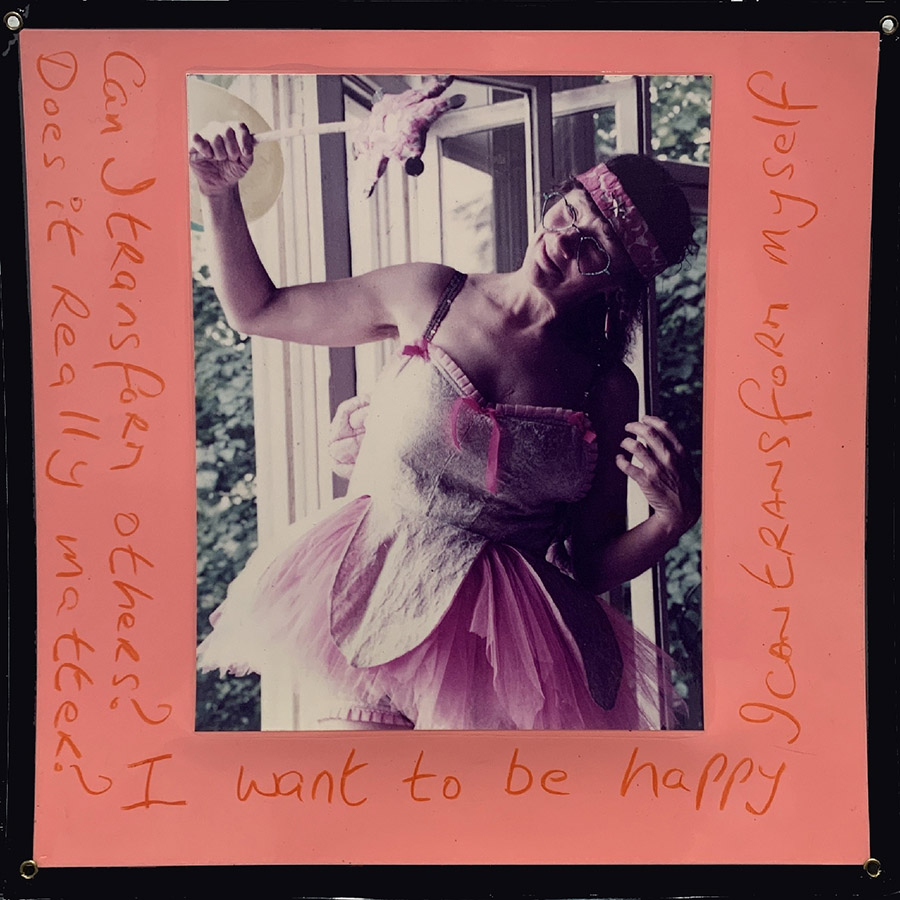
Jo Spence
‘Only when I got to fifty did I realise I was Cinderella (06)’, 1984. © The Jo Spence Memorial Archive, Ryerson Image Centre, Toronto, Canada, Courtesy Centre for British Photography, London
‘One of the key things that has always driven me is doing things that are challenging. I thought I’d like to give this a go… if I get it right, it could be like a little legacy that I leave as well. I can’t make pictures but I can do the bit that puts them alive, if I help create something that for a period of time brings something new to photography, brings something exciting and interesting and may be impactful.’
To try to square the circle of being private collectors but wanting it to be public, some seven years ago the Hyman Collection was catalogued and put online. One consequence of this was it made it easy for museum curators to see what was framed up and ready to go, they could just send a van and be loaned a show for free.
All or nothing
James and Claire have donated 125 major modern photography works to the Yale Center for British Art in Connecticut, USA, and 100 works to the Bodleian Library, Oxford, UK. They have supported photographers, commissioned photographers, bought prints from photographers and set up a foundation to give grants to photographers. The next logical step is the CfBP and James has gone all-in.
‘The gamble I’ve made is to go in big; one could do something very, very small, that would be the other way of doing it, to start small. What I’ve tried to do is say, well look, this is what we could have, this could put British photography on the map which I still believe is hugely under-appreciated nationally and internationally. I kind of made the judgement that if one starts big, it’ll get taken more seriously than starting small and that may help when we approach potential private sponsors, it may help when we approach some of the bigger bodies.’
Funding
Talking to James, his commitment and passion for the advancement of British photography is absolute. The CfBP is currently consuming his every waking hour and every penny in his pocket. Building the CfBP is already costing around double the estimate. Also evident throughout our conversation is how much the goodwill and support of the photography community is needed and the community has already responded.
On 17 November 2022, an online print sale was launched to raise funds for the CfBP and The Hyman Foundation’s support of photographers in Britain. They were A4 in size, printed to the photographer’s specification and cost £70. Contributors included some of Britain’s top photographers both part of and beyond the Hyman Collection including Robert Darch, Craig Easton, Julia Fullerton-Batten, Jem Southam, Homer Sykes and me.
‘I was incredibly grateful to you and other photographers for supporting the print sale because at the point when we were approaching people, nobody really knew what we were doing. People were buying into an idea which hadn’t yet been realised and that’s a significant thing to do.
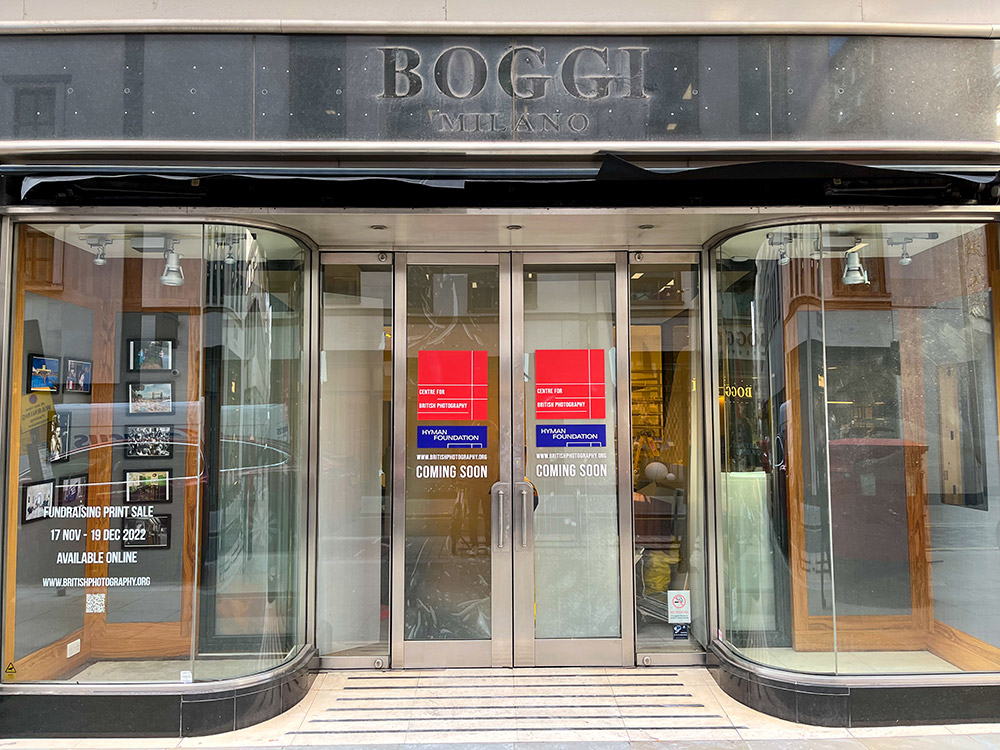
The exterior of number 49 Jermyn Street, formerly an Italian style menswear shop, now home of the Centre for British Photography. Photo by Peter Dench
Pretty well everyone we approached wanted to be part of it, publicised it and supported what we’re doing. More than grateful, I’m touched that people have had faith without it actually being up and running. That to me is quite a special thing because this is about community and relationships.’ The community spirit is reciprocal. The CfBP website has a page with links to over 100 arts organisations.
Success for James would be an independent, self-financing, sustainable CfBP that he wouldn’t necessarily need to be involved, fund or direct.
Outsider input
Outside curation is a core part of achieving an independent programme that defines what is offered to the public and reflected in one of the opening exhibitions, a self portrait show curated by the campaign group, Fast Forward: Women in Photography.
‘I think there’s now 12 or 14 photographers in that but only two of them are in our collection and it was very important for me to make a statement that this wasn’t all about us and it wasn’t all about our collection. This is outside curators putting on a show of photographers that they respect that aren’t necessarily in the collection. That for me is exciting,’ he says.
It would be folly to disregard the Hyman Collection and the second headline opening exhibition, The English at Home, has over 150 photographs sourced from it, providing an overview of the domestic British interior. Taking its title from Bill Brandt’s first book, the show will feature photography from Brandt and Bert Hardy to Martin Parr, Daniel Meadows, Karen Knorr, Richard Billingham and Anna Fox.
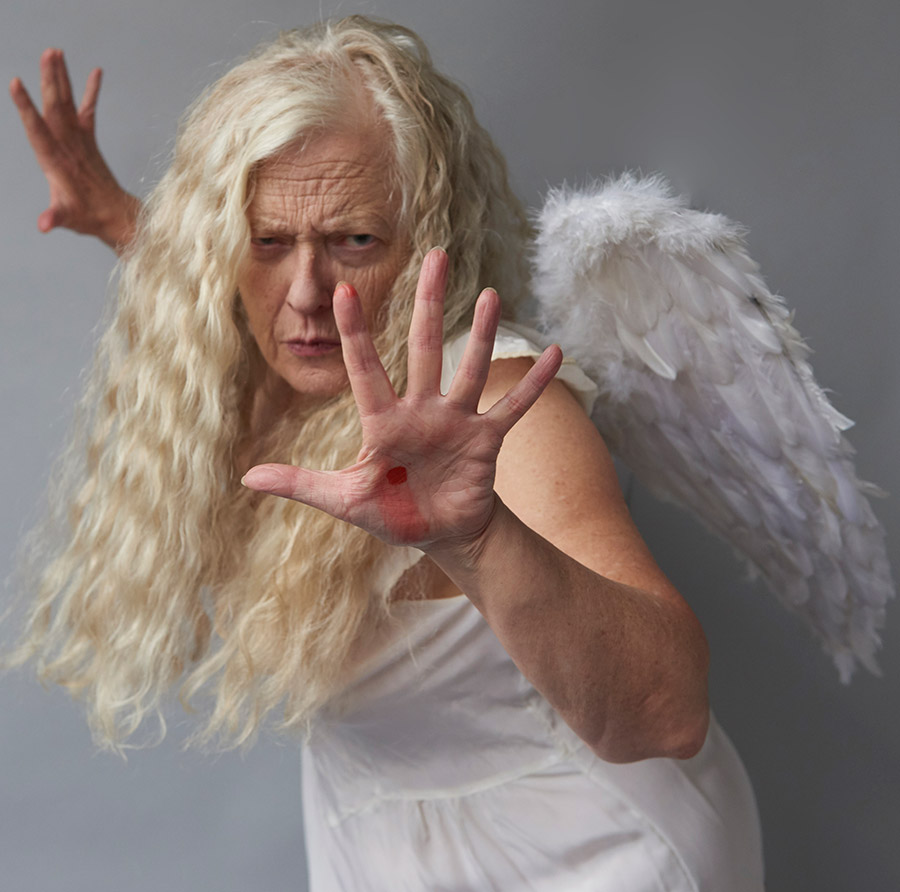
Rosy Martin ‘I didn’t put myself down for sainthood (5)’, 2018. © Rosy Martin in collaboration with Verity Welstead, Courtesy Centre for British Photography, London
Also on display will be two bodies of work that were commissioned by the Hyman Collection: Spitting by Andrew Bruce and Anna Fox is a response to the original Spitting Image puppets in the Hyman Collection, and Wish You Were Here, a recent series commissioned from Heather Agyepong, which focuses on the work of Aida Overton Walker, the celebrated African American vaudeville performer who challenged the rigid and problematic narratives of black performers.
Four In Focus displays will spotlight specific bodies of work – these will include Jo Spence: Cinderella in collaboration with the Jo Spence Memorial Library at Birkbeck, University of London; and the series Fairytale for Sale by Natasha Caruana that was recently acquired by the Hyman Collection.
The home for British photography
British photography has always had to compete for space and the Centre for British Photography is arguably supporting it in a way nobody else is. British photography usually has to compete within everything else that is happening within an institution. Britain has been crying out for decades for a dedicated CfBP and now somebody is giving it a go, to fill that gap, work alongside other institutions and unite British Photography.
That’s something to get very excited about. If it fails, it would be a tragedy and may never happen for a long time. Together anything is possible. When it opens, should you go? Absolutely, and you’d be welcome to jog along in your tracksuit and trainers.
Information regarding the Centre for British Photography is rapidly updating, so to keep up to date and find out more, simply visit: britishphotography.org
More reading
Best photography exhibitions to see in 2023
The Centre for British Photography opens in January 2023


